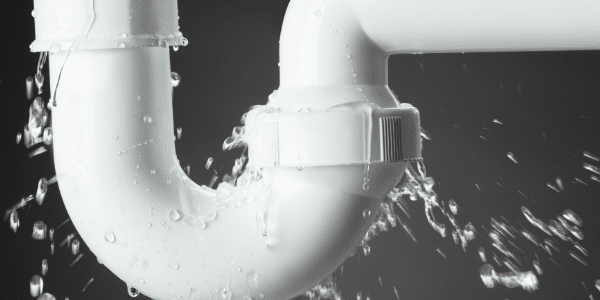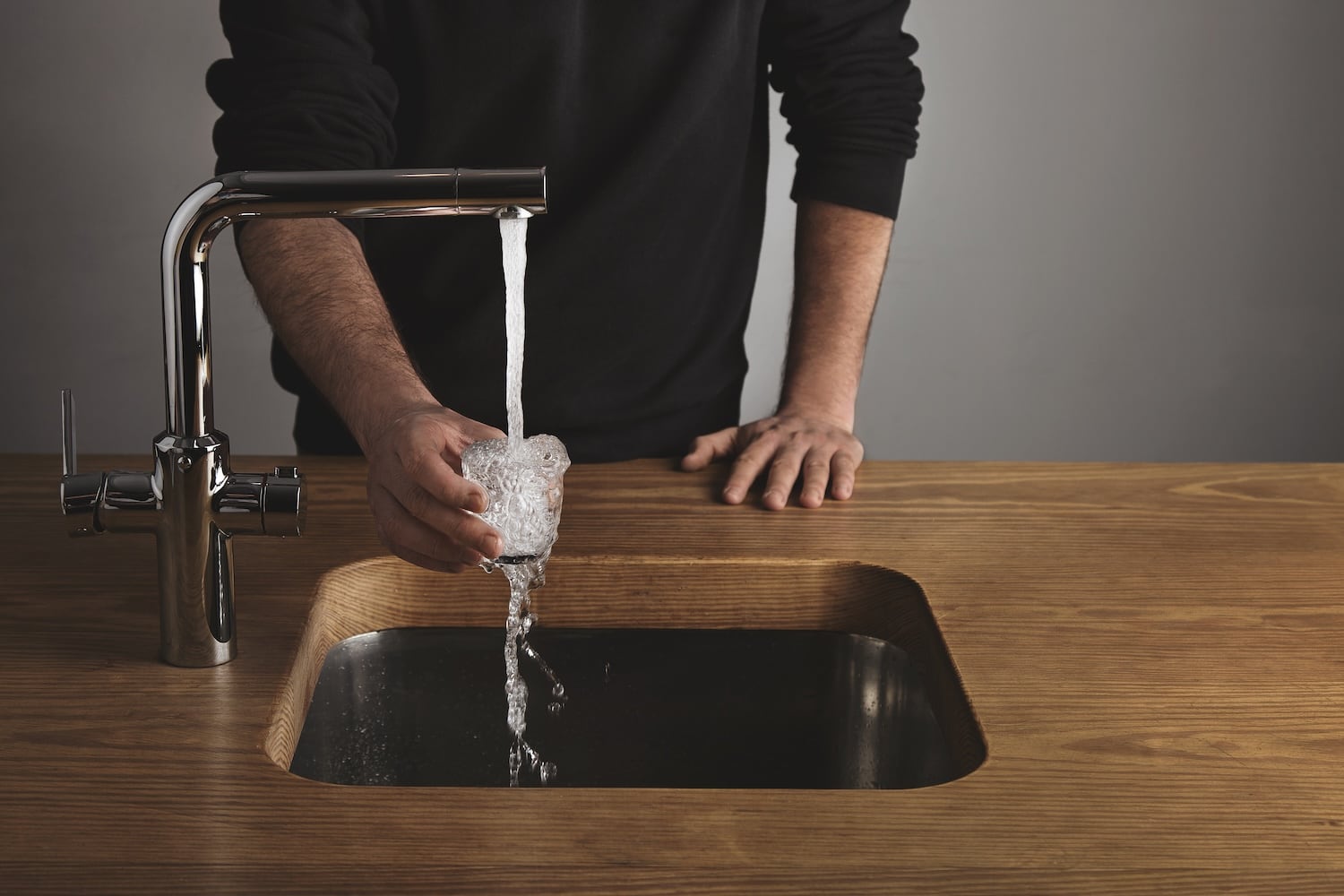
What should I do if my garbage disposal is leaking?
Published: June 27, 2025 / Last Updated: July 1, 2025
Garbage disposals are standard in many kitchens, helping to manage food waste and keep things running smoothly. However, when that trusted disposal starts leaking, it can cause more than just a mess—it can lead to water damage, mold, and even costly repairs if not addressed promptly. Water leaking from the disposal can damage or stain the cabinet beneath the kitchen sink, where many items are stored. Garbage disposal leaking is a commonly reported household problem, especially as units age and seals deteriorate.
If you’ve noticed puddles under your sink or dripping disposal, here’s what you should do—and when to call in a professional from Magnolia Companies. Leaks can occur at any time, so it’s important to identify them quickly to prevent further damage.

Step 1: Identify the Source of Your Garbage Disposal Leak
Not all leaks are created equal. Your garbage disposal has several connection points, and pinpointing the origin is the first step to a solution. Expect to spend some time inspecting each area, as identifying and fixing leaks can range from a quick adjustment to a more involved repair.
Check these common areas:
- Sink Flange (Top): This is where the disposal connects to the bottom of your sink. If the plumber’s putty, mounting assembly, or seals are worn out or damaged, you might see water dripping from the top. Damaged seals are a common cause of leaks at this location.
- Side Connection (Dishwasher Hose): If your dishwasher is connected to the disposal, the hose that runs between the two may be loose or cracked.
- Bottom of the Disposal Unit: A leak from the bottom usually indicates internal seal failure, which often means the unit is at the end of its lifespan.
To troubleshoot, try pouring colored water into the sink and plugging the drain. Pouring the water helps you visually check for leaks at each connection point. If the drain is plugged, it can help you identify exactly where water escapes.
Tips: Take your time and inspect each area carefully. Look for signs of damaged seals, rust, or loose connections. These tips can help you identify and fix leaks more efficiently.
Step 2: Turn Off the Power and Water
Safety first—before inspecting or attempting any repairs, shut off the disposal at the breaker and stop any running water. Even a small leak can become hazardous if electricity and water come into contact.
Step 3: Tighten Connections or Replace Seals
If the leak is coming from a connection point:
- Tighten clamps, bolts, or screws around the hose, drain pipe, or pipe connections, and check that the mounting ring is secure. You may need to loosen bolts or screws to adjust or inspect connections before retightening.
- Replace worn-out gaskets, damaged seals, or plumber’s putty around the sink flange. Before applying new putty, scrape off old plumber’s putty and residue with a plastic putty knife. If needed, pull out the disposal or flange to access seals or connections.
- Check the drain pipe connection to ensure it hasn’t loosened from vibration, and verify that it is properly sealed and free of leaks.
Tip: Always tighten connections securely, replace any damaged seals, and inspect the drain pipe and mounting ring for leaks to prevent future issues.
Need help? Magnolia’s plumbing experts can handle quick fixes and more complex repairs to get your disposal back in working order safely and efficiently. Contact us for more information or to schedule an appointment.
Step 4: Assess Whether a Replacement Is Needed
If the leak is from the bottom of the disposal, the internal seals may be corroded or damaged. Rust or damage to the house (housing) of the disposal is also a clear sign that replacement is needed. In this case, repairs usually aren’t cost-effective, especially if you notice your garbage disposal leaking from the bottom.
Most garbage disposals last about 8–15 years, so you can expect to replace your unit within that timeframe or sooner if it develops significant leaks or rust. It does not matter what type or brand of disposal you have—if your garbage disposal is leaking, especially from the bottom, replacement is often the best solution. Magnolia can install a new disposal efficiently, ensuring your kitchen is back to normal quickly and reliably.

Step 5: Prevent Future Leaks
To extend the life of your garbage disposal:
- Run cold water, rather than warm or hot water, when using the disposal to help flush out and remove debris and keep your drains clear and functional.
- Fun Fact: Why You Should Run Cold Water with a Garbage Disposal
- Cold water solidifies grease and oils, allowing them to be broken down and flushed through the pipes.
- Hot water can melt fats, which may then re-solidify further down the pipes, leading to clogs.
- The cold water helps the motor and grinding components stay cool.
- It ensures that food particles are flushed completely through the system and into your drain line.
- Fun Fact: Why You Should Run Cold Water with a Garbage Disposal
- Avoid fibrous or starchy foods like celery, potato peels, or coffee grounds that can clog or strain the system.
- Did You Know? Why Some Foods Don’t Belong in Your Garbage Disposal
- Fibrous foods like celery can wrap around the disposal’s moving parts, while starchy items such as potato peels can form a thick paste that blocks your pipes. Coffee grounds, though small, tend to clump together in your drain line, leading to buildup over time.
- To keep your disposal running smoothly, stick to soft, non-fibrous scraps, always run cold water while it’s in use, and avoid sending these tricky items down the drain.
- Did You Know? Why Some Foods Don’t Belong in Your Garbage Disposal
- Pro Tip: Regularly clean your disposal by pouring a mix of ice cubes, vinegar, and baking soda into the disposal to help break down buildup and maintain your system. To prevent future leaks and keep your garbage disposal in top shape, routinely check for loose connections, avoid overloading the unit, and always plug the disposal back in after maintenance or testing.
Call Magnolia for Reliable Repairs or Replacement
Leaks can be particularly tricky, especially when they conceal themselves behind the cabinet or plumbing. If you’re unsure of where the water is coming from—or want the job done right the first time—Magnolia is here to help. It does not matter what type or brand of garbage disposal you have—Magnolia can handle the repair or replacement.
Need help with a leaking garbage disposal?
Contact Magnolia Companies today or schedule a service appointment with one of our plumbing experts.
- Contact Form
- Schedule a Service Form
- Call us, 888-829-8510
We’ve proudly served the Washington, D.C., area for 75 years with top-notch plumbing services, including garbage disposal repair and installation. Whether it’s a simple fix or a complete replacement, we’ll keep your kitchen running smoothly with reliable, licensed service.
Share This Article:
Request An Estimate
Contact us for a free estimate. It's just one form or phone call away!
Join Our Newsletter
Submit your email to receive promotions.
